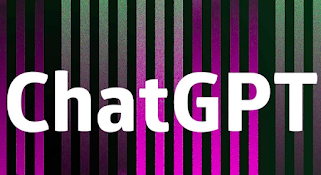An Introduction to GPT: The Power of Generative Language Models
An Introduction to GPT: The Power of Generative Language Models
Introduction:
Generative language models have been gaining a lot of attention in recent years, and for good reason. These models have the ability to generate human-like text, making them useful for a wide variety of applications, such as natural language understanding, text generation, and more. In this post, we'll take a closer look at GPT (Generative Pre-trained Transformer), one of the most popular generative language models currently in use.
What is GPT?
GPT (Generative Pre-trained Transformer) is a deep learning model that was developed by OpenAI. It's based on the Transformer architecture, which was introduced in a 2017 paper by Google. The Transformer architecture allows the model to process input sequences in parallel, rather than in a sequential manner, which makes it much faster than traditional recurrent neural networks.
GPT is pre-trained on a massive amount of text data, which enables it to understand and generate human-like text. It can be fine-tuned for a wide variety of natural language processing tasks, such as language translation, text summarization, and more.
What Can GPT Do?
GPT has a wide range of capabilities, including:
Language Translation: GPT can be fine-tuned to translate text from one language to another.
Text Generation: GPT can generate text that is similar to a given input. This can be used to generate everything from news articles to fiction.
Text Summarization: GPT can be fine-tuned to summarize long pieces of text into shorter versions.
Question Answering: GPT can be fine-tuned to answer questions based on a given context.
Text Completion: GPT can complete text input by suggesting the next word or phrase.
Some Key Point of GPT :
- GPT-3 is a more advanced version of GPT-2 and it's pre-trained on a dataset of 570GB of text data from the web, making it one of the largest language models. With 175 billion parameters, it is capable of completing any task that requires natural language understanding and generation.
- GPT-3 has been used in a wide range of applications, including language translation, text generation, text summarization, question answering, and more. Some examples of its use include:
- Automatic content generation for websites, social media, and other platforms.
- Generating code, such as SQL queries and Python scripts.
- Dialogue generation for chatbots and virtual assistants.
- Automatic text summarization, which can be used to summarize news articles or other long-form text.
- Language Translation, GPT-3 can be fine-tuned to translate text from one language to another with high accuracy and fluency.
- GPT-3 has been praised for its ability to understand and generate human-like text, but also criticized for the potential ethical implications of the model's capabilities, such as the potential to generate fake news or impersonate individuals online.
- GPT-3 has been trained on a massive dataset of text from the internet, and as a result, it may reproduce biases present in the data it was trained on. It's important to be aware of these biases and take steps to mitigate them when using GPT-3 or other language models in applications.
Conclusion:
GPT is a powerful generative language model that has the ability to generate human-like text. It's based on the Transformer architecture, which makes it faster than traditional recurrent neural networks. GPT can be fine-tuned for a wide variety of natural language processing tasks, making it a valuable tool for many different industries.









No comments